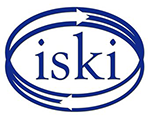Digital Literacy as The Basis for The Use of Digital Wallets during COVID-19 Pandemic
DOI:
https://doi.org/10.12928/channel.v10i2.157Keywords:
e-wallet, digital, literacy, students, yogyakartaAbstract
This research aims to find out how far students in Yogyakarta carry digital literacy as the basis for using their e-wallets. An E-wallet is one of the cashless payment tools currently a means of payment that is widely used by the people of Indonesia, especially the younger generation. Students, as part of the younger generation, often use e-wallets as a means of payment instead of cash. Students have a basic knowledge of digital wallets from experience and the information they get from their environment. The basis of expertise is digital literacy by students using e-wallets.
This research uses a qualitative research method with resource sampling and purposive techniques. Researchers used data collection techniques with interviews and document studies to find data from sources. Then the data can be tested by triangulation of the data source.
This research results in students actively using digital wallets in online transaction activities. From this practice, if referring to digital literacy competencies using ten JAPELIDI competencies in four quadrants, functional and critical consuming quadrants are the most dominant carried out by students. At the same time, the other quadrant has yet to be done by students using digital wallets.
References
Afifah, Ghina Nur, and Amellia Alfidhdhah Yanti. (2022). Cyber Public Relations Activities of Depok City Diskominfo in Building a Positive Image. CHANNEL: Jurnal Komunikasi 10(1). DOI: 10.12928/channel.v10i1.22011.
Annisa, Wahyu Nur; Agustina, Cahyani Widya; Puspitasari, Wahyuningtyas; Rofi’ah, Khoirun Nida Noor; Ramadhani, Shandira Arsy. 2021. Peran Literasi Digital Untuk Mencegah Penyebaran Hoaks Bagi Masyarakat Indonesia.” Journal of Education and Technology 1.
APJII. (2020). Laporan Survei Internet APJII 2019 – 2020. Vol. 2020.
Astari, Nabila. (2021). “A Literature Review: Digital Marketing Trends in Indonesia During the COVID-19 Pandemic.” CHANNEL: Jurnal Komunikasi 9(2):125. DOI: 10.12928/channel.v9i2.20836.
Bank Indonesia. (2019). Blueprint Sistem Pembayaran Indonesia 2025 Bank Indonesia: Menavigasi Sistem Pembayaran Nasional di Era Digital. Jakarta: Bank Indonesia.
Bank Indonesia. (2021). Statistik Sistem Pembayaran (SSP). Retrieved from Bank Indonesia: https://www.bi.go.id/id/statistik/ekonomi-keuangan/ssp/uang-elektronik-transaksi.aspx
Belshaw, D. A. (2021). What Is 'Digital Literacy'? A Pragmatic Investigation. Durham Theses, 1-274. http://etheses.dur.ac.uk/3446/
Boku. Inc. (2021). Mobile Wallets Report. California: Boku. Inc.
Dirjen Dikti. (2020). Statistik Pendidikan Tinggi | Higher Education Statistics 2020. Jakarta: Direktorat Jenderal Pendidikan Tinggi.
Hariyanti, N., Salim, M., & Nabilah, R. Z. G. (2021). Level Literasi Digital Peserta Kelas Whatsapp Group Klinik MPASI. Jurnal Komunikasi, 15(2), 109–124. https://doi.org/10.20885/komunikasi.vol15.iss2.art3
IDN Research Institute. (2021). Indonesia Millenial Report 2020. Jakarta: IDN Media.
Ipsos. (2020). Evolusi Industri Dompet Digital: Strategi Menang Tanpa Bakar Uang. Jakarta: Ipsos.
Kumala, I., & Mutia, I. (2020). Pemanfaatan Aplikasi Dompet Digital Terhadap Transaksi Retail Mahasiswa. Semnas Ristek (Seminar Nasional Riset dan Inovasi Teknologi) Vol 4, No 1, 64-69. https://doi.org/10.30998/semnasristek.v4i1.1118
Kurnia , N., Sadasri, L. M., Angendari, D. A., Yuwono, A. I., Syafrizal, Monggilo, Z. M., & Adiputra, W. M. (2020). Yuk, Sahabat Perempuan Bertransaksi Daring Dengan Cermat. Yogyakarta: Program Studi Magister Ilmu Komunikasi UGM .
Limilia, P., & Arsti, N. (2019). Literasi Media dan Digital di Indonesia: Sebuah Tinjauan Sistematis. Jurnal KOMUNIKATIF Vol. 8 No. 2, 205-222.
Lankshear, C., & Knobel, M. (2008). Digital Literacies: Concepts, Policies, and Practices. New York: Peter Lang Publishing.
Marsh, J. (2016). The Digital Literacy Skills and Competence of Children of Pre-School Age. Madan, S., & Arora, J. B. Securing Transactions and Payment Systems for M-Commerce. Hershey: IGI Global. Media Education Studies & Research, 197-214.
Marta, R. F. Kurniawati, L. S. M. W. Harry, H., Salim, M. Andung, P. A. (2022). Transfer of Knowledge and Scientific Publication Literacy for Young Lecturer by Pojok Dialektika. Abdimas Galuh 4 (1), 310-322. http://dx.doi.org/10.25157/ag.v4i1.7128
Mayangsari, D., & Salim, M. (2021). The Effectiveness of University Instagram Account as Information Media for Students. 3rd Jogjakarta Communication Conference (JCC 2021). https://doi.org/https://doi.org/https://doi.org/10.2991/assehr.k.211121.040
Moleong, L. J. (2012). Metodologi Penelitian Kualitatif. Bandung: PT Remaja Rosdakarya.
Nielsen. (2021). Nielsen Trust in Advertising. New York City: The Nielsen Company.
Prabowo, D. L., Salim, M., Hariyanti, N., Marta, R. F. (2022). Pengaruh Terpaan Tayangan Video YouTube Otodriver. com Terhadap Asosiasi Merek Mobil Pada Pengikut Akun. Jurnal Audience: Jurnal Ilmu Komunikasi 5 (1), 95-110. http://publikasi.dinus.ac.id/index.php/audience/article/view/5797
Perdew, L. (2017). Information Literacy in the Digital Age. Minnesota: Essential Library.
Rianto, Puji. (2019). Literasi Digital dan Etika Media Sosial di Era Post-Truth. Interaksi: Jurnal Ilmu Komunikasi 8(2):24. doi: 10.14710/interaksi.8.2.24-35.
Salim, M., Utami, F. U., Bramantyo, H. (2021). Digital Media-Based Nutrition Health Communication Model. 3rd Jogjakarta Communication Conference (JCC 2021). 247-251. https://www.atlantis-press.com/proceedings/jcc-21/125964693
Salim, M., Rosdian, E.D.S. (2022). Digital Marketing Communication to Increase CRSL Store Brand Awareness. Medium. 9(2). 242-262 https://doi.org/10.25299/medium.2021.vol9(2).8800
Silverblatt, A., Smith, A., Miler, D., Smith, J., & Brown, N. (2014). Media Literacy: Keys to Interpreting Media Messages Fourth Edition. California: Praeger.
Sugiyono. (2015). Metode Penelitian Pendidikan: Pendidikan Kuantitatif, Kualitatif, dan R&D. Bandung: Alfabeta.
Turow, J. (2009). Media Today: an Introduction to Mass Communication. New York: Routledge.
Yuwono, A. I., Anshari, I. N., Syafrizal, R., & Adiputra, W. M. (2018). Yuk, Jadi Gamer Cerdas: Berbagi Informasi melalui Literasi. Yogyakarta: Program Studi Magister Ilmu Komunikasi UGM.
Downloads
Published
How to Cite
Issue
Section
License
Copyright (c) 2022 CHANNEL: Jurnal Komunikasi

This work is licensed under a Creative Commons Attribution-ShareAlike 4.0 International License.








